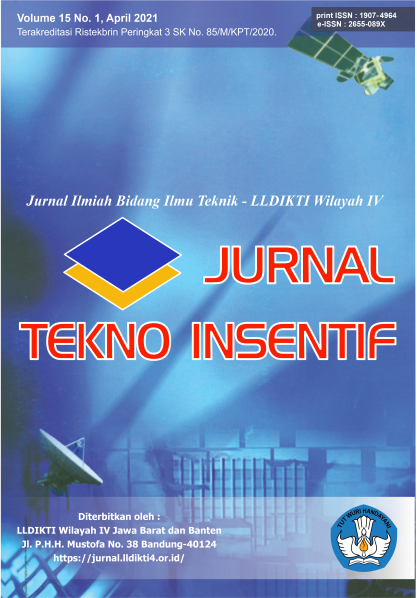Dampak Cemaran Residu Klorpirifos Terhadap Penurunan Kualitas Lingkungan pada Lahan Pertanian
Abstrak
AbstrakBawang merah merupakan salah satu komoditas hortikultural penting yang dikonsumsi oleh penduduk Indonesia. Insektisida golongan organofosfat yang digunakan petani bawang merah mengandung senyawa klorpirifos. Penggunaan pestisida dengan intensitas yang terlalu tinggi dan berkelanjutan menimbulkan berbagai masalah kesehatan dan pencemaran lingkungan, penurunan produktivitas tanah, keracunan pada hewan dan manusia. Penelitian ini menganalisis dampak cemaran residu klorpirifos terhadap penurunan kualitas lingkungan pada lahan pertanian. Metode pengambilan sampel menggunakan purposive sampling. Penentuan kadar residu klorpirifos dalam tanah menggunakan gas kromatografi dengan detektor ECD dan uji regresi linear. Kadar residu klorpirifos terbesar pada penggunaan insektisida dengan konsentrasi 1,0% atau 10.000 mg/kg yaitu sebesar 1,83 mg/kg. Hasil pengujian sampel A, B, C, D dan E menunjukkan tingginya kadar residu klorpirifos karena melebihi batas maksimum residu klorpirifos sebesar 2 mg/kg. Dampak cemaran residu klorpirifos dalam tanah dapat menyebabkan perubahan pH, turunnya jumlah organisme dalam tanah serta turunnya kandungan C-organik dan N-total tanah.
AbstractShallots are one of the important horticultural commodities that are consumed by Indonesians. The organophosphate class insecticide used by shallot farmers contains chlorpyrifos compounds. The use of pesticides with too high intensity and sustainable causes various health problems and environmental pollution, decreased soil productivity, is potentially poisoning to animals and humans. The study analysed the impact of chlorpyrifos residue contamination on environmental quality degradation in agricultural land. The sampling method used was purposive sampling.The determination of chlorpyrifos residue in the soil was undertakeun using gas chromatography with an ECD detector and a linear regression test. The highest residual chlorpyrifos concentration was found in the use of insecticides with a concentration of 1.0% or 10,000 mg / kg, which was 1.83 mg / kg. The test results of samples A, B, C, D and E showed high levels of chlorpyrifos residue because they exceeded the maximum residue limit of 2 mg / kg chlorpyrifos. The impact of chlorpyrifos residue contamination in the soil can cause pH changes, a decrease in the number of organisms in the soil and a decrease in the total soil C-organic and N-content.


















